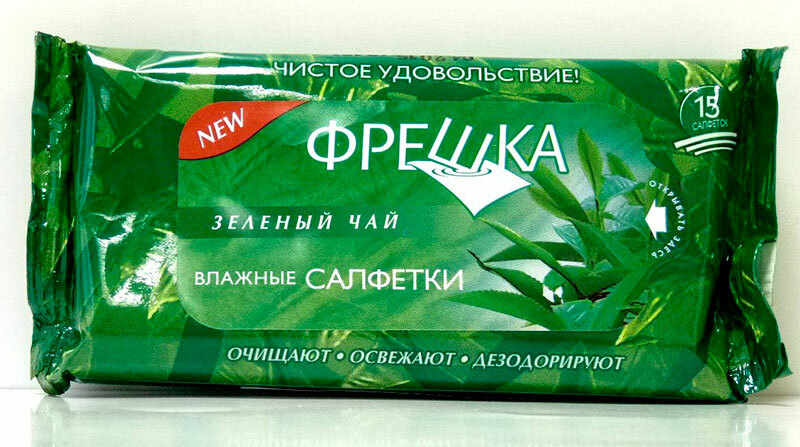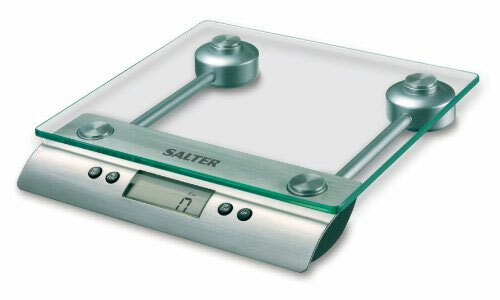In recent years, fire has ceased to be exclusively a classic element of the interior. Modern biomodel made of metal and glass, and they work on the ecological fuel which does not smoke and soot. Fireplaces are a central element in the design of living rooms, libraries, bedrooms and kitchens. They replaced the bulky ovens that are used to prepare food. Depending on the location of the fireplaces are classified into four types: island, corner, built-in and wall. Most of the material goes to the first type as the unit is installed in the middle of the room and has four walls. The most economical option in terms of tiling and decoration is considered built-in model. In the classical configuration consisting of a fireplace firebox, the sweeping, chimney and portal. We are interested in the last component, since it it is decorated with stone decoration, wood, inlaid, with plaster. The more modern electric fireplaces models represent a box with no - or communications. Due to this quality, they are used in the design of country houses is not only, but also of city apartments.
Decorating of fireplace with decorative stone returns to the origins of the interior, that is, at a time when his stoning exclusively natural roughly processed materials. Suitable such decisions not only for classic or ethnic style. Modern loft, modern, Provencal, Gothic perfectly with the stonework. She, in turn, is suitable for wallpaper in retro style and textured Venetian plaster. Natural stone has an impressive weight, and finishing is fraught with difficulties. In the market of building materials there are now a number of high-quality imitations. Decorative stone is not inferior to the fire on the characteristics of the original, and in some ways even surpasses it. This article will talk about how to choose material from a variety of options and how to correctly put it.
Content
- Artificial or natural stone?
- Criteria for selection of decorative stone for finishing
-
Tiles suitable for finishing
- Terracotta
- Majolica
- The heat-resistant tiles clinker
- Porcelain tiles
- tiles
-
Master - class tiling
- Preparatory work
- Tools and materials
- tiling technology in the fireplace and the chimney wall
- conclusion
Artificial or natural stone?
Natural rock - a natural composite that is formed over many years of stone powder, marble and quartz powder bonded into a single unit by means of polymer resins. This material was used in ancient times and it did not lose its relevance up to the time when the brick was invented. Artificial stone has some advantages in comparison with natural rock:
- As part of the composite lightweight fillers are present, through which each brusochek has a low weight. This feature allows the material to use it for decoration not only the fire, but the accent wall on which it is located. Natural stone due to the large weight is not recommended to use in decorating the surfaces of a height greater than 1 m.
- Stone fireplace decor easy to assemble, and its compliance and relative softness allows sheathing structures of complex configuration.
- For cutting the material need only Bulgarian, while the cut in real cobbles is not so simple.
- Reasonable price of artificial stone, perhaps, was its main advantage. For a very reasonable fee, you can decorate not only fire, but also part of the wall, a doorway. Natural stones require laborious processing using special equipment, which leads to great cost material.
- Artificial stone is available in different color variations. Usually the rocks are characterized by poor range of shades. Stones rare flowers cost a fortune.
- The material can be used in the finishing of seamless technology, which is impossible when working with natural rock.
See also:Décor Wallpaper

Although the purchase of artificial stone for cladding, it seems a good idea, it also has disadvantages:
- Natural rock has a unique pattern. Neither simulation can not replicate the natural texture of the material.
- This stone due to its hardness, is not afraid to mechanical damage, and the terms of its operation range from a few dozen to a couple hundred years.

Although both materials with proper approach allows to realize the most original design ideas, artificial stone more "flexible" in this regard.





Criteria for selection of decorative stone for finishing
When selecting the optimal artificial material is necessary to pay attention to a number of nuances:
- Product should be well packed.
- The surface material should be smooth. If the stone has a porous structure on the front side, it was a violation of its production technology. How long the material will not serve.
- Experts believe that simulation should be "restraint." According to them, stone strength reaches maximum values only after months from the time of manufacture.
- By product includes several certificates. Since the synthetic material, it is important that these documents were available, we are talking about the surface finish, which is periodically heated. Manufacturing flaws necessarily affect the quality of the artificial stone, as a result of which he may be harmful to human health.
- On the packaging of high-quality imitation necessarily present the manufacturer's name, manufacturing date.

Also, do not buy artificial stone "with hands", because you do not know where and by whom it was made, how it meets the standards of quality and will last many years.






Tiles suitable for finishing
Not every kind of tiles for fireplaces. Depending on the manufacturing techniques and structures, the material is classified into several types. Each of them is not only the cost but also the characteristics, features of installation and lifetime. Pick up the tiles on the basis of features of the room, which is decorated with a fireplace.

For example, for a heavy-duty baths buy a material which is not afraid of high temperature and high humidity. Kitchen pick an imitation of similar characteristics. Less demanding on the tile living rooms, bedrooms, offices. Their climate is stable.

Terracotta
As the main constituent acts clay tiles. Material perfectly secured to any surface by conventional liquid nails. Tiles has a high vapor and air permeability. It helps to absorb excess moisture from the decor in the room and take part in creating a favorable microclimate. Terracotta is faced not only fireplace portals, but the facades of houses. Material frost, so it is ideal for interior decoration with unstable temperature (e.g., a bath). The special surface texture allows terracotta give warmth for a long time, so fireplaces, decorated with such tiles, cool slowly. On the strength of the material is not behind the furnace bricks.






See also:Methods for beautiful bouquets packaging
Majolica
Majolica - a glazed terracotta. Additional glossy layer surface allows cleaning of abrasive products, contact with which does not damage the plate. The characteristics of majolica not behind terracotta. It is also easily attached to the surface for a long time gives off heat, it can be used in all types of premises. In the production of the top layer majolica decorated patterns. A wide range of patterns allows you to choose the material for interior design.






The heat-resistant tiles clinker
Clinker made from several varieties of clay and fireclay powder. The composition of added natural dyes. The material is environmentally friendly. Since its low porosity structure, it slowly loses heat. Frost resistance allows finish fireplaces in homes and temporarily used the baths. The thickness of the clinker ranges from 0.9 to 1.2 cm. Tile is strong, durable and insensitive to mechanical damage. On the surface of the clinker liquid nails fixed. Unfortunately, the material has no coupling terracotta, however additionally used for finishing the reinforcing mesh.






Porcelain tiles
For the appearance of granite, we are obliged to Italians. Technology of production of the new cladding material was first tested at the end of the last century. Monolith nonporous, which significantly increases its service life. Gres is made from marble chips, metal oxides, silica sand with the addition of pigments by high-pressure pressing. Artificial material worked well during testing low and high temperatures. This quality porcelain allows its use in the design of fireplaces in pairs, in the kitchen and for the decoration of houses facades. The material can decorate the room with virtually any styling, as it comes with a wide range of color and texture options. Granite surface does not fade under sunlight.






tiles
Tiles - piece trim parts made from special types of clay. Their surface is treated with a coating that gives it a glossy shine. Due to the high cost of the tiles have not managed to break out of the market leaders. The technology of their production involves roasting at high temperatures, which makes the material heat resistant and durable. For tiles are characterized by high heat, which is useful for those environments where the fireplace is not just an element of interior, but also an alternative source of heat.

Since the tiles are very expensive, they can be issued only to the mantelpiece. For the rest of the portal is chosen a cheaper material, which will be combined in color and texture.





Master - class tiling
Lay tile fireplace with his hands is not so difficult. All finishing process will take 5-8 hours. A high level of skill of the builder will significantly speed up the procedure. Grouting is performed on the following day, so to get a beautiful, stylish interior element can be as little as two days.
Finishing process is divided into three stages:
- Surface preparation;
- Work on the wall;
- Finishing.
Complete the process of decorating the mantel of the chimney, and if you plan to use wall decorations.

Preparatory work
Before oblitsevat fireplace, it is necessary to pre-prepare the surface. If she took off the old layer of finish, the portal is cleaned of adhesive residues and level. The surface is then degreased and remove fine particles of dust, which subsequently can affect the quality of the fastening of the fabric. Rounding processing applying mastic layer which seals the micro cracks.
See also:Graffiti in the interior






Tools and materials
For work you need the following materials:
- Tile;
- Corner elements;
- Heat-resistant grout and glue;
- Identical pieces of drywall to create smooth joints between the elements.

The standard tool set includes:
- Level and plumb;
- Latex gloves;
- Building a gun;
- Bulgarian with a disk for cutting tiles;
- Comb spatula;
- Rubber mallet;
- Waste container (bucket bowl);
- Drill and a nozzle for mixing the dry mixtures.
The list of materials is sometimes supplemented by special means for surface treatment after laying tiles. For example, certain soil release agents are used.





tiling technology in the fireplace and the chimney wall
Obkladyvat fireplace should be only after the completion of the surface preparation. Start with the corners. Their fixed after the measurement. They will serve as a benchmark, which will provide a smooth stacking rows of tiles at an angle. The capacity of the heat-resistant adhesive is mixed. Then it is applied to a comb trowel on the back of the tile. For a better coupler adhesive coated surface of the fireplace is also in an analogous manner. Then it is applied to the tile and after the location correction forcibly pressed. Rounding out the consolidation pristukivaniem rubber mallet. To gap maintained between the seams of equal width, which is inserted in pre-prepared pieces of drywall. Remove it will be possible only after 12 hours of fixing decor. If necessary, cut the tile grinder into fragments of the desired size. A day after the laying can start grouting. The composition has a basic white color which is adjusted by means of special dyes. Grout is mixed with the pigment according to the manual, and then loaded into the gun construction. Its nozzle is inserted into the weld groove and accurately extruded mixture migrates along the clearance. Grout should catch up with the tiles, but do not act on it. If part of the structure fell on a clean surface, no need to immediately try to wipe it. Grout is removed after it is cured, using a screwdriver or a knife. After 1.5-2 hours the composition starts to thicken and takes on the consistency of thick paste. Now proceed to grouting, which is carried out using a conventional flat-head screwdriver.





If the fastening elements to be produced without using an adhesive mastic, the "wrong" side of the fabric slightly moistened with water.

conclusion
After laying the tiles and chimney portal decorated with plaster moldings, wood, metal ornaments. Fireplace made out should, in accordance with the stylistic concept. In the classical interior is decorated with his paintings, candlesticks, old clocks. In current embodiments utilize garde and futuristic sculpture copyrights pictures. Provencal pick porcelain vases, dishes on trays and fresh flowers.





The ecological style to give preference to natural decorations: cut down a tree, gravel, bumps, dry twigs collected in a bouquet. Decor fire on New Year's made of holiday wreaths, miniature Christmas trees, garlands, socks for gifts. Unusually look options when portal stands on a pedestal, and it has a hollow niche for firewood.








